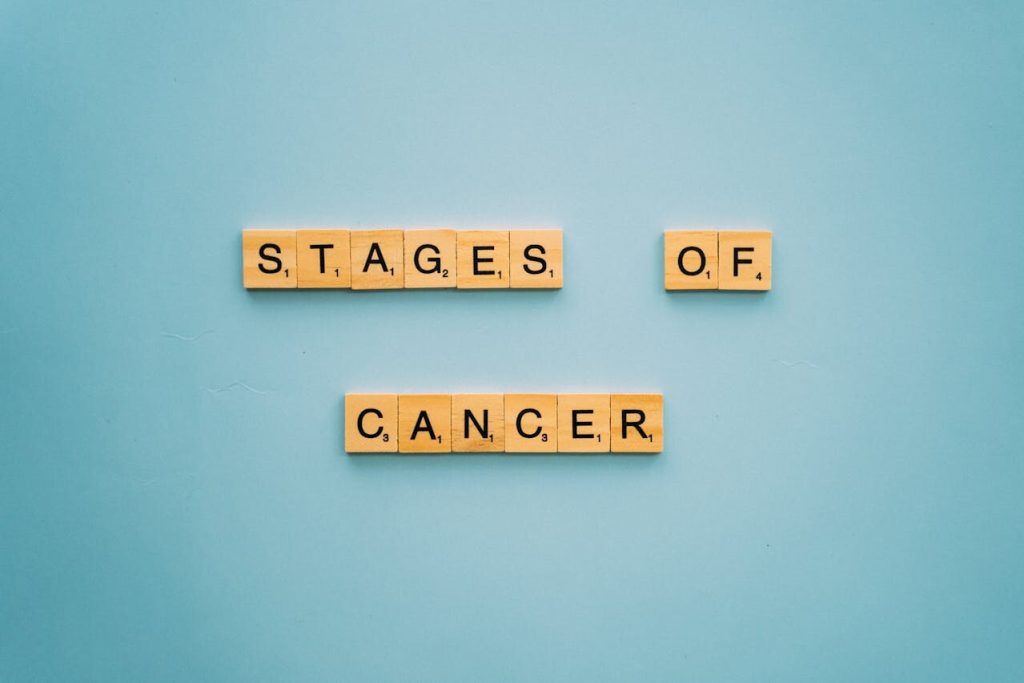When it comes to lymphoma, a type of cancer that affects the lymph nodes and immune system, skin manifestations can be an early sign. A lymphoma rash, in particular, can be a key indicator of the disease. It’s important to recognize the signs of a lymphoma rash and seek medical attention promptly.
So, what does a lymphoma rash look like? It can appear as red or purple patches or bumps on the skin. These rashes can be itchy and may feel warm to the touch. They can also occur in multiple locations on the body, such as the arms, torso, or legs.
Key Takeaways:
- A lymphoma rash can be an early sign of the disease.
- It can appear as red or purple patches or bumps on the skin.
- The rash may be itchy and warm to the touch.
- It can occur in multiple locations on the body.
Understanding Lymphoma Rash: Symptoms and Types
Lymphoma rash is a skin manifestation that can occur as part of non-Hodgkin’s lymphoma (NHL) or Hodgkin’s lymphoma (HL). These types of cancers affect the lymphatic system, which is a network of vessels and nodes that help the body fight off infections.
The symptoms of lymphoma rash can vary depending on the type of lymphoma and its stage. Some common presentations include:
| Lymphoma Type | Rash Characteristics |
|---|---|
| Cutaneous T-cell lymphoma (CTCL) | Red, scaly patches or plaques that may itch or ulcerate; can mimic eczema or psoriasis |
| Anaplastic large cell lymphoma (ALCL) | Red, raised or nodular lesions that may be painful; can mimic insect bites or abscesses |
| Hodgkin’s lymphoma (HL) | Red or purplish nodules or plaques; typically located on the trunk, arms, or legs |
| Non-Hodgkin’s lymphoma (NHL) | Red or purple nodules or plaques; may be itchy or painful; typically located on the trunk, arms, or legs |
It is important to note that not all lymphoma patients develop a rash. Additionally, other skin conditions can resemble lymphoma rash, such as eczema, psoriasis, or drug reactions. Therefore, a proper medical evaluation is essential for an accurate diagnosis.
Types of Lymphoma Rashes
Several types of lymphoma rashes can occur, including:
- Primary cutaneous lymphomas – these are lymphomas that start in the skin and have not spread to other parts of the body
- Secondary cutaneous lymphomas – these are lymphomas that start in another part of the body and then spread to the skin
- Systemic lymphomas with skin involvement – these are lymphomas that affect both the skin and other organs in the body
The type of lymphoma rash a person develops depends on the type of lymphoma they have, as well as its stage and location.
Diagnosing Lymphoma Rash: What to Expect
Diagnosing a lymphoma rash requires a thorough physical examination and medical history review by a healthcare professional. If a lymphoma rash is suspected, the healthcare provider will likely recommend a skin biopsy to confirm the diagnosis. During this procedure, a small piece of skin is removed and examined under a microscope to check for cancerous cells.
Other diagnostic tests that may be ordered to determine the extent of the disease include blood tests, imaging scans, and bone marrow biopsy. It is important to seek medical attention promptly if you notice any unusual skin changes or other symptoms that could indicate lymphoma.
Identifying Lymphoma Rash: Key Signs to Watch For
Recognizing the key signs and symptoms of a lymphoma rash is important for prompt diagnosis and treatment. These rashes may vary in appearance and location on the body, but some common features to watch for include:
- Red, itchy, or painful patches of skin that may appear raised or bumpy
- Swollen lymph nodes in the neck, armpits, or groin
- Fever, chills, or night sweats
- Fatigue or unexplained weight loss
- Unusual bleeding or bruising
If you experience any of these symptoms, it is important to seek medical attention right away. A healthcare professional can perform a thorough examination and recommend appropriate diagnostic tests, such as a skin biopsy or imaging studies.
Lymphoma Rash Pictures: Visual References for Recognition
Visual cues can be helpful when identifying a lymphoma rash. Here, we have included a range of pictures that can help you better recognize the characteristic appearance of such rashes. A captioned description accompanies each picture, highlighting the key features to look for.
| Picture | Captioned Description |
|---|---|
 |
Image 1: This lymphoma rash presents as reddish-purple patches on the skin. It is often found on the chest, abdomen, and back, and can be itchy or painful. |
 |
Image 2: This lymphoma rash appears as red nodules on the skin, often with a smooth surface. It is typically found on the face, neck, arms, and legs. |
 |
Image 3: This lymphoma rash appears as scaly, itchy patches on the skin. It is often found on the scalp, face, and neck, and may be mistaken for eczema or psoriasis. |
 |
Image 4: This lymphoma rash presents as small, raised bumps on the skin that may be purple or red. It often appears on the arms, legs, and back, and may be itchy or painful. |
If you suspect that you may have a lymphoma rash, it is important to consult with a healthcare professional for a proper diagnosis and treatment plan.
Treating Lymphoma Rash: Medical Approaches
When it comes to treating lymphoma rash, there are a variety of medical approaches that can be taken depending on the individual case. The most appropriate treatment will depend on factors such as the type and severity of the rash, as well as the underlying lymphoma.
Topical Creams
One common approach to treating lymphoma rash is the use of topical creams, which can be applied directly to the affected area of skin. These creams may contain corticosteroids, which can help to reduce inflammation and itchiness. Other types of creams may contain antibiotics or antifungal agents to treat any secondary infections that may occur.
Oral Medications
In more severe cases, oral medications may be recommended to treat lymphoma rash. These may include antihistamines to reduce itching and swelling, or immunosuppressants to calm the immune system’s response to the rash. In some cases, chemotherapy or radiation therapy may be required to treat the underlying lymphoma.
Targeted Therapies
In recent years, targeted therapies have emerged as a promising approach to treating lymphoma and its associated skin manifestations. These therapies work by targeting specific proteins or cells that are involved in the development and progression of lymphoma. They may be used in combination with other treatments, or as a standalone therapy.
It is important to work closely with a healthcare professional when deciding on a treatment plan for lymphoma rash. Depending on the individual case, a combination of different approaches may be necessary to achieve the best possible outcome.
Holistic Treatment Modalities at the Cancer Center for Healing
When it comes to cancer care, the Cancer Center for Healing takes a holistic approach that encompasses the physical, emotional, and spiritual aspects of healing. Under the guidance of Dr. Leigh Erin Connealy, the center offers a range of holistic treatment modalities for lymphoma and other types of cancers. These modalities focus on improving overall health and well-being, as well as addressing the root cause of the disease.
At the Cancer Center for Healing, patients can expect to receive personalized care that takes into account their unique needs and goals. The center’s approach to cancer care includes a range of complementary therapies, such as nutritional support, integrative medicine, and mind-body techniques. By utilizing these complementary therapies alongside medical treatments, patients can receive a comprehensive approach to cancer care that aims to restore balance and promote healing.
The Comprehensive Cancer Care Approach at Cancer Center for Healing
The Cancer Center for Healing is committed to providing a comprehensive approach to cancer care. Under the guidance of Dr. Leigh Erin Connealy, their team of healthcare professionals offers a range of therapies and treatments designed to address the physical, emotional, and spiritual aspects of healing.
The center’s focus on integrative medicine means that they combine traditional medical approaches with complementary therapies. This comprehensive approach considers the whole person, including their lifestyle, environment, and emotional well-being, to create an individualized treatment plan.
Integrative Medicine
Integrative medicine is a core component of the Cancer Center for Healing’s approach to cancer care. This is an approach that emphasizes the importance of considering the whole person when creating a treatment plan. It combines traditional medical approaches with complementary therapies, such as acupuncture, massage therapy, and yoga, to provide a holistic approach to treatment.
Nutritional Support
The Cancer Center for Healing recognizes the importance of proper nutrition in supporting the body during cancer treatment. They offer personalized nutrition plans that focus on whole foods and supplements to optimize the body’s natural healing processes.
Mind-Body Techniques
The center’s mind-body techniques are designed to help patients manage stress, anxiety, and other emotional challenges that may arise during cancer treatment. These techniques may include meditation, visualization, and mindfulness practices.
By taking a comprehensive approach to cancer care, the Cancer Center for Healing provides patients with a wide range of therapies and treatments to support their healing journey. Consultation with a healthcare professional is crucial for an accurate diagnosis and individualized treatment plan.
Consultation at the Cancer Center for Healing
If you or a loved one is experiencing lymphoma rash symptoms, it is important to seek professional medical advice. The Cancer Center for Healing offers consultations with Dr. Leigh Erin Connealy, a renowned integrative medicine expert who takes a holistic approach to cancer care. During your consultation, Dr. Connealy will review your medical history, perform a physical examination, and discuss your symptoms and concerns. Based on this information, she will work with you to create an individualized treatment plan that may include a combination of medical and holistic therapies.
To schedule a consultation at the Cancer Center for Healing, you can call (949) 680-1880 or visit their website for more information.
Lymphoma Rash Causes and Treatment Options
Lymphoma rashes are usually a sign of an underlying lymphoma, a type of cancer that affects the lymphatic system. The immune cells in the lymphatic system may either multiply out of control or malfunction, resulting in the growth of cancerous tumors, lymph nodes enlargement, and, in some cases, skin manifestations. Lymphoma rashes may also be a result of the body’s immune response to the disease.
The specific cause of lymphoma rashes varies on the type of lymphoma a person has. The two main types of lymphoma are Hodgkin’s lymphoma and non-Hodgkin’s lymphoma. Hodgkin’s lymphoma is characterized by the presence of Reed-Sternberg cells and typically affects young adults, whereas non-Hodgkin’s lymphoma affects people of all ages and has a greater variety of subtypes with varying degrees of aggressiveness.
The treatment for lymphoma rashes depends on the type of lymphoma, its stage, and the person’s overall health. In some cases, controlling the underlying lymphoma can reduce or eliminate the rash. Options for treating lymphoma may include chemotherapy, radiation therapy, targeted therapies, and stem cell transplants.
Complementary Therapies for Lymphoma Rash Relief
While medical treatments for lymphoma rash are important, complementary therapies can also be helpful for managing symptoms and promoting overall well-being. Here are a few options to consider:
- Acupuncture: This traditional Chinese medicine approach involves inserting thin needles into specific points on the body to promote healing and balance. Some studies suggest it may help alleviate pain, nausea, and fatigue in cancer patients.
- Massage Therapy: Massage can provide relief for lymphoma rash symptoms such as itching and pain. It may also help reduce stress and improve sleep. Be sure to work with a licensed massage therapist who has experience working with cancer patients.
- Herbal Remedies: Certain herbs may have anti-inflammatory or immune-boosting properties that could help alleviate lymphoma rash symptoms. Always speak with a healthcare professional before taking any new herbs or supplements, as they can interact with other medications or treatments.
Remember, complementary therapies should never be used as a substitute for medical treatments recommended by a healthcare professional. Instead, they can be used in conjunction with traditional treatments to promote overall wellness and symptom relief.
Prevention and Lifestyle Tips for Lymphoma Rash Management
Managing lymphoma rash requires a comprehensive approach that includes medical treatment, self-care, and lifestyle adjustments. The following prevention and lifestyle tips can help individuals manage their symptoms and reduce the risk of flare-ups:
- Keep skin moisturized: Using fragrance-free moisturizers can help soothe and hydrate dry or itchy skin.
- Avoid triggers: Certain triggers, such as hot water, chlorine, or harsh chemicals, can aggravate lymphoma rash. Avoiding these triggers can help prevent flare-ups.
- Eat a healthy diet: A balanced diet rich in fruits, vegetables, and whole grains can help support overall health and boost the immune system.
- Stay hydrated: Drinking plenty of water can help flush toxins from the body and keep skin hydrated.
- Manage stress: Stress can weaken the immune system and trigger lymphoma rash. Incorporating stress-management techniques, such as meditation or yoga, can help reduce stress levels and improve overall well-being.
- Monitor symptoms: Regularly monitoring symptoms and seeking prompt medical attention for any changes can help individuals manage their condition more effectively.
By incorporating these prevention and lifestyle tips into their daily routine, individuals with lymphoma rash can help manage their symptoms and improve their overall quality of life.
Research and Advances in Lymphoma Rash Treatment
Medical research in the field of lymphoma rash treatment is ongoing, with several promising advances in recent years. One notable treatment approach is immunotherapy, which involves using the body’s immune system to fight cancer cells. This treatment has shown success in some cases of lymphoma rashes, particularly those caused by certain types of lymphoma.
Another area of research is targeted therapy, which uses drugs to target specific proteins or genes present in cancer cells. This approach has shown significant promise in treating lymphoma rashes caused by certain gene mutations or abnormalities.
In addition, clinical trials are ongoing for new treatments such as CAR T-cell therapy, a type of immunotherapy that involves genetically engineering T-cells to target and destroy cancer cells.
It is important for patients with lymphoma rashes to stay informed about new research and advances in treatment options. Consulting with healthcare providers and participating in clinical trials may offer new possibilities for improved outcomes.
Living with Lymphoma Rash: Coping Strategies and Support
Living with lymphoma rash can be challenging, both physically and emotionally. Coping strategies can help patients manage symptoms and maintain a positive outlook during treatment.
One effective strategy is seeking support from loved ones and medical professionals. This can help reduce feelings of isolation and provide practical assistance when needed. Support groups, counseling services, and online communities can also offer valuable resources and a safe space to share experiences.
“It’s important to acknowledge your feelings and seek support when needed,” says Dr. Leigh Erin Connealy, founder of the Cancer Center for Healing. “We take a comprehensive approach to cancer care, addressing not just physical symptoms but also emotional and spiritual needs.”
Practicing self-care is another essential coping strategy. This can include stress-reducing activities such as meditation, yoga, or breathing exercises. Maintaining a healthy lifestyle with regular exercise and a nutritious diet can also help improve overall well-being.
It’s crucial for patients to communicate openly with their healthcare providers and discuss any challenges they may be facing. Medical professionals can offer guidance on managing symptoms, adjusting treatment plans, and referring to additional support resources.
Remember, living with lymphoma rash is just one aspect of a person’s life. By focusing on self-care, seeking support, and staying informed, patients can maintain a sense of control and improve their quality of life.
Conclusion
In conclusion, recognizing the signs of lymphoma rash is crucial for early detection and treatment of lymphoma. Understanding the symptoms and types of lymphoma rashes, as well as the diagnostic and treatment options available, can help individuals take control of their health and well-being.
At the Cancer Center for Healing, a comprehensive approach to cancer care is offered, including holistic treatment modalities and a focus on addressing the physical, emotional, and spiritual aspects of healing. Individuals can schedule a consultation to learn more about the center’s services and explore their options for personalized treatment.
In addition to medical treatments, complementary therapies and lifestyle changes can also provide relief from lymphoma rashes and improve overall quality of life. Staying informed about research and advances in lymphoma rash treatment, as well as seeking support and coping strategies, can also be beneficial for individuals and their loved ones.
Overall, it is important to prioritize self-care and seek professional help when needed to effectively manage lymphoma rash and other symptoms of lymphoma. By taking an active approach to their health, individuals can improve their chances of successful treatment and a better prognosis.
FAQ
Q: What is lymphoma rash and what does it look like?
A: Lymphoma rash is a skin manifestation associated with lymphoma, a type of cancer that affects the lymphatic system. It can appear as red, itchy, and swollen patches on the skin.
Q: What are the key signs of lymphoma rash?
A: Key signs of lymphoma rash include redness, itchiness, swelling, and sometimes a bumpy texture. It may also be accompanied by systemic symptoms like fatigue and unexplained weight loss.
Q: How is lymphoma rash diagnosed?
A: Diagnosing lymphoma rash typically involves a physical examination, review of medical history, and possibly a biopsy. It is important to consult a healthcare professional for an accurate diagnosis.
Q: How can I identify lymphoma rash?
A: To identify lymphoma rash, look for characteristic signs such as redness, itchiness, swelling, and a bumpy texture on the skin. Pay attention to any accompanying systemic symptoms and seek medical advice.
Q: Are there visual references available for recognizing lymphoma rash?
A: Yes, we provide visual references in the form of lymphoma rash pictures. These images can help you visually identify the characteristic appearance of lymphoma rashes.
Q: What are the medical approaches for treating lymphoma rash?
A: Medical treatment approaches for lymphoma rashes may include topical creams, oral medications, and targeted therapies. It is important to work closely with a healthcare professional for an individualized treatment plan.
Q: What holistic treatment modalities are available at the Cancer Center for Healing?
A: The Cancer Center for Healing offers holistic treatment modalities for lymphoma and other types of cancers. These may include integrative medicine, nutritional support, and mind-body techniques.
Q: What is the comprehensive cancer care approach at the Cancer Center for Healing?
A: The Cancer Center for Healing takes a comprehensive approach to cancer care, addressing the physical, emotional, and spiritual aspects of healing. They offer various therapies and treatments tailored to each individual’s needs.
Q: How can I schedule a consultation at the Cancer Center for Healing?
A: To schedule a consultation at the Cancer Center for Healing, please contact us at [phone number]. Our center is located in Irvine, CA.
Q: What are the causes of lymphoma rash and what are the treatment options?
A: Lymphoma rash can be caused by the underlying lymphoma itself and the body’s immune response. Additional treatment options may include radiation therapy and chemotherapy, depending on the individual case.
Q: Are there complementary therapies available for lymphoma rash relief?
A: Yes, complementary therapies such as acupuncture, massage therapy, and herbal remedies can be used alongside medical treatments to provide relief for lymphoma rashes.
Q: What are some prevention and lifestyle tips for managing lymphoma rash?
A: Practicing good skincare, maintaining a healthy lifestyle, and managing stress can help manage lymphoma rash. Regular monitoring and self-care are also important.
Q: What recent research and advances are there in lymphoma rash treatment?
A: Recent research is exploring emerging therapies and clinical trials that offer promising results for lymphoma rash treatment. Stay informed and consult healthcare providers for new possibilities.
Q: How can I cope with living with lymphoma rash and find support?
A: Coping strategies and support resources, such as support groups, counseling services, and online communities, are available for individuals and their loved ones living with lymphoma rash.






